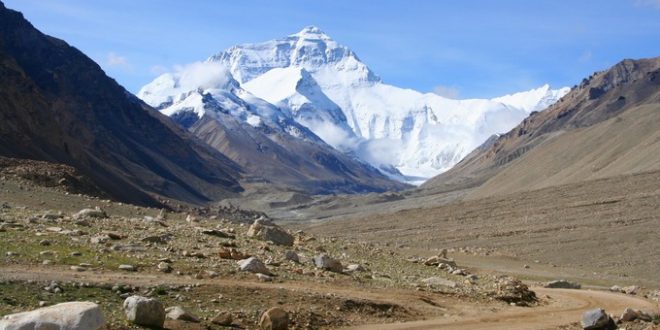Mount Everest claimed the lives of three climbers and a Sherpa last week, the first deaths reported on the world’s highest mountain this year.
Among them was a woman who was attempting to prove that vegans can succeed at the toughest physical challenges.
Lecturer Maria Strydom, from Melbourne, Australia, was reported to have died from altitude sickness.
Dutchman Eric Arnold, 35, died on Friday and Indian climber Subhash Paul died overnight on Sunday as he was being helped down the 8,850 metre-high mountain by Sherpa guides.
Two other Indian members of Mr Paul’s team – Paresh Nath and Goutam Ghosh – are missing.
Academic Dr Strydom, who also uses the name Marisa, was an experienced mountaineer who had previously reached the summits of Argentina’s Aconcagua and Mount Kilimanjaro.
She was attempting to mount the highest seven peaks on each of the seven continents in order to disprove claims that people who consume no animal products struggle with extreme activities.
Dr Strydom told the website of Monash University, where she works: “It seems that people have this warped idea of vegans being malnourished and weak.
“By climbing the seven summits we want to prove that vegans can do anything and more.”
Her husband, Robert Gropel, also a vegan, was among those who fell ill on the mountain and had to be airlifted off the mountain.
Dr Strydom told her university website she was well aware of the risks.
She said: “We’ve all heard stories of frostbite and having to turn around from excessive waiting times due to inexperienced people blocking routes. This can lead to life threatening situations and death.”
Mr Arnold was able to reach the summit, tweeting his success, but apparently died on the way down, despite having plenty of bottled oxygen.
A statement from the expedition leader of the group that included Mr Arnold and Ms Strydom said: “Eric summited Mount Everest on 20 May 8am and fulfilled his childhood dream.
“During the ascent he was doing well, but after the South Summit he was struggling a bit. Descending from the summit he became slower and slower and it became clear that something was wrong.
“We managed to bring him down to the South Col; to his tent, gave him more Oxygen, lots of drinks and food and it looked like he was recovering. Unexpectedly Eric passed away that evening in his tent.
“Marisa was doing well until the ‘Balcony’, but became very slow after this and decided to turn around.
“Normally this would give her enough time to descent safely, but her condition deteriorated rapidly. Halfway between the South Summit and Balcony she was hardly able to move and became very confused.
“Her Husband and several Sherpas struggled all night to bring her down and miraculously she made it back to the South Col.
“We managed to stabilise her (and) with Medicine & Oxygen and Marisa was able to walk out off the tent herself the next morning. Helicopter rescue is only possible from Camp 3, so we continued our descent the next morning.
“But 2 hours out of camp she collapsed. Her Husband tried to retrieve her, but this was not possible anymore. Rob was evacuated by helicopter from Camp 2 the next day.”
The majority of those who have fallen sick have developed frostbite or fallen ill with altitude sickness near the summit, one expedition organiser said.
But a climber who made his way down after a successful climb, Begian Jelle Vegt, said: “There are some problems with, let’s say, people who are not that experienced slowing things down. And that creates problems for other people.”
Other climbers have expressed concerns that too many climbers are trying to reach the summit in one of the few narrow windows of opportunity when the conditions are favourable, causing blockages on the route.
Favourable weather has allowed nearly 400 climbers to reach the summit from Nepal since 11 May, but the altitude, weather and harsh terrain can cause problems at any time.
Agencies/Canadajournal
 Canada Journal – News of the World Articles and videos to bring you the biggest Canadian news stories from across the country every day
Canada Journal – News of the World Articles and videos to bring you the biggest Canadian news stories from across the country every day



